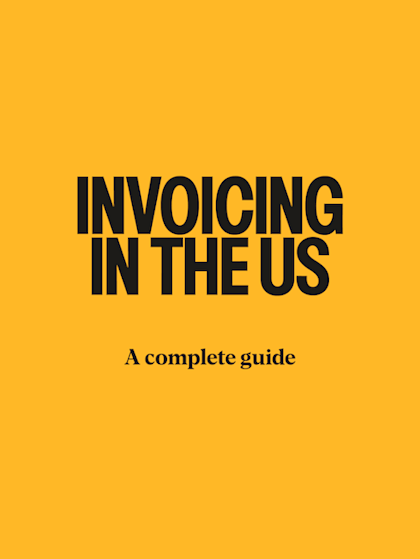
Paper versus paperless invoicing
Last editedApr 20231 min read
The pros and cons of using paperless invoicing over the traditional method of paper invoicing.
It may seem surprising in this day and age, but many smaller companies still stubbornly hold onto paper invoicing processes, printing out bills that are sent to customers by post.
But issuing invoices this way is slow, time-consuming and vulnerable to human error.
How to collect payments with GoCardless
1.
Create your free GoCardless account, access your user-friendly payments dashboard & connect your accounting software (if you use one).
2.
Easily create payment links to collect one-off or recurring online payments, and share them with your customers.
3.
From now on you'll get paid on time, every time, as GoCardless automatically collects payment on the scheduled Direct Debit collection date. Simple.
Technology is available to offer even the smallest firms greater efficiency when demanding and collecting payments, via paperless invoice processing. Here are just a few reasons why you should consider going paperless:
It's cheaper - Processing a paper invoice costs, on average, $15, according to FreshBooks. This jumps to nearly $40 for larger companies, due to their size making their processes more complex. Online invoices, though? FreshBooks suggests they cost about $3.50 - a huge saving.
It's more efficient - Paper invoices use up valuable staff time and are prone to human error. About 25% of accounts payable time is spent on resolving problems related to invoice data entry and processing, according to a study by Wax Digital. Fewer people are needed to process payments in a paperless accounts payable process, so manpower can be deployed to more valuable parts of the business. Invoice accuracy also typically improves.
You get paid sooner - Businesses using online tools are paid 33% faster than those issuing paper invoices, according to cloud accounting provider Xero. It’s no surprise given paper invoicing involves documents being dispatched by post, opened and sorted at the customer’s premises, then often passed for approval by more than one member of staff before payment is activated. Paperless accounts payable systems can instead allow for a simple ‘pay now’ facility embedded in the invoice itself.
It improves customer relationships - Paperless invoicing allows for greater levels of personalization. If desired, business owners can create bespoke paperless invoice templates for each client. The better you adapt your billing process to your customer's individual wants and needs, expect their satisfaction to improve.
It enables discounts - Better efficiency equates to faster approval cycles, which itself can create trade discount opportunities. Business owners can pass on the benefits of better cash flow to customers. When invoices are being processed more quickly, companies can offer customers payment discounts for settling up debts early.
Added perks - Reducing paper waste is good for the environment. Plus, given the legal requirements to retain invoices for several years, going digital can free up a lot of physical storage space (and the associated costs).
Antiquated systems, fragmented invoice processing, and a one-size-fits-all approach to billing can have a negative impact. On profits, cash flow, and a business’ reputation.
Moving from paper to digital processes can improve accuracy, boost staff productivity, and see cash begin to flow more reliably into a business.
